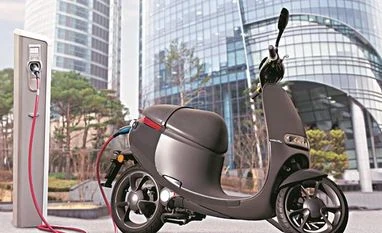After the electric-two-wheeler market, which has seen a flurry of models from various start-ups, the e-car market is all set to be disrupted by start-ups changing the rules of the game.
More than two dozen start-ups in India are working on bringing e-car models that are going to hit the road over the next two years, says Puneet Gupta, director of S&P Global. Many of these will be targeted at the low-cost segment.
As of now, Tata Motors Tiago EV priced between Rs 8.49 lakh and Rs 11.79 lakh is the most affordable e-car in India.
MG Motors, which presently sells e-SUV ZS EV, is also set to launch the MG Air, its sub-3-metre electric car in January 2023. It’s expected to be priced at Rs 10-11 lakh. The model will be MG’s first smart city e-car in India, the company said in a recent statement.
Interestingly, start-ups are looking to change the status quo not only by replacing internal combustion engine with battery technology, but also dabbling with various forms and functions. Some of them are taking personal mobility beyond the realm of four wheels and five seats.
Take PMV (personal mobility vehicle), a Mumbai-based start-up. On Wednesday, it unveiled the EaS-e, an electric car that can seat two adults. The smart micro car, classified as a quadricycle, where the passenger sits behind the driver, is priced at Rs 4.8 lakh and will go on sale in the second half of 2023. PMV doesn’t have any direct competition.
Kalpit Patel, founder, PMV, said that most five-seater cars, SUVs, and sedans are not optimally utilised, as they mostly see single or double occupancy and are used primarily for office commute, or for running errands. Such vehicles are adding to the congestion on roads and contributing to the carbon emissions “Why only have five-seater models, if the distance covered on a daily basis is so less, and the vehicle is occupied only by two at most times?” asked the banker-turned-entrepreneur.
The EaS-e claims to offer a greener and more sustainable mobility solution that is lighter on the wallet, and easily manoeuvrable on congested roads and parking lots.
The model boasts multiple driving modes, regenerative braking, single-pedal driving, remote parking assist, cruise control, and follow-me-home lights, along with remote connectivity and diagnostics. It will be offered with 4G connectivity, and will get over-the-air (OTA) updates.
Patel said the company has already received bookings for 6,000 units from India and abroad. It would produce the model at a third-party vendor’s plant that has a capacity to make 1,000 units per month. It would set up its own facility only after reaching the 10,000-unit sales mark. The company is in active discussions with private equity firms to raise funds.
“We see the low-cost e-car market explode in the coming years. With prices of conventional fuel cars going north, any e-car priced at sub-Rs 10 lakh will find many takers,” said Gupta from S&P Global. The success, however, will depend on the quality and the ability of the start-ups to scale up operations, and deliver consistent quality, he added.
India’s nascent e-car market, where the top three manufacturers account for 97 per cent of volume is relatively more consolidated than the e-two-wheeler market where the top three churn out 50 per cent of the volume, according to a recent report by Goldman Sachs titled “Charging up for India’s Electric Car journey.”
Some of the other start-ups that are set to enter the e-car market include Pravaig Dynamics Defy — an electric SUV that is scheduled to be unveiled in Mumbai on 25 November. It boasts 500-km range on single charge.
Ola Electric too has staked its claim for the segment. The company recently teased its first EV car, which is expected to be available by 2024. The teaser suggests that the Ola EV, slated to be a sedan, will get a clean design on the front. It’s likely to offer a range of over 500 km in a single charge.
“Starting calendar year 2025, as more OEMs (original equipment manufacturers) and EV models enter the fray, we expect additional scale, reversal of battery price inflation and higher localisation to provide a favourable set-up where incumbent car manufacturers could be at less risk of disruption than incumbents in the e-two wheeler market,” wrote Chandramouli Muthiah of Goldman Sachs.
Gearing Up For The Ride
- E-car registrations in India have quadrupled over the past 12 months, albeit off a small base
- 22% electric car sales penetration estimated by FY30 vs 1% in FY22
- Over FY23E to FY30E, e-car volumes to grow at 56% CAGR. The broader India car industry to grow at 5% volume CAGR
- Share of the top three e-carmakers is 97% of volume versus 50% in the e-two-wheeler market
Unlock 30+ premium stories daily hand-picked by our editors, across devices on browser and app.
Pick your 5 favourite companies, get a daily email with all news updates on them.
Full access to our intuitive epaper - clip, save, share articles from any device; newspaper archives from 2006.
Preferential invites to Business Standard events.
Curated newsletters on markets, personal finance, policy & politics, start-ups, technology, and more.
)